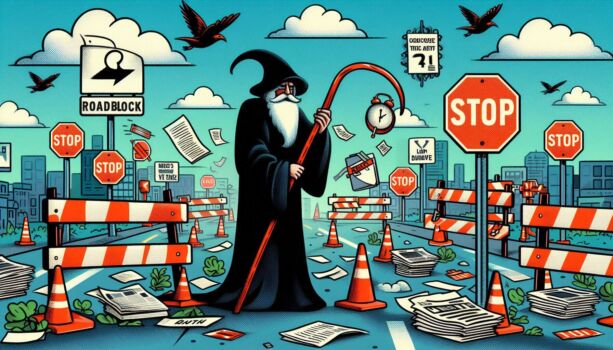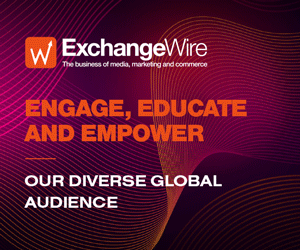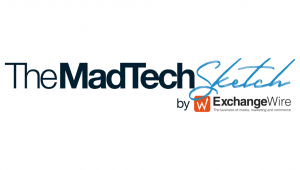Brand Safety in the AI Age
by Mathew Broughton on 9th Apr 2025 in News

In the first of an article series examining key findings in the most-recent edition of the ExchangeWire Media Pulse, research lead Mat Broughton examines the current state of brand safety, and the potential role AI will play in its future development.
Few subjects within the industry are so contentious and cyclical as brand safety, the practices and tools used to ensure marketing material does not appear against harmful/inappropriate content which could damage an advertiser’s reputation. Even “Brand Safety in the [topic du jour] [vague measure of time]” articles from this bald writer now crop up on the site every four years, like a particularly shit version of the Olympics.
And so, after a comparative lull and with the inevitability of Old Father Time rocking up with his sickle, brand safety has once again plastered trade press headlines in recent weeks. We start with the closure of the Global Alliance for Responsible Media (GARM), as a result of a lawsuit filed by Elon Musk’s X. The non-profit initiative run by the World Federation of Advertisers (WFA) was established to promote digital safety and bolster transparency in where ads were placed. A seemingly noble cause, yet was shuttered following the legal case, in which X alleged that it was responsible for orchestrating a grand scheme of nefarious collusion among leading advertisers to pull their spend from the platform. (As opposed to them consciously electing to pull their spend as a result of X axing 80% of its trust and safety engineers; running ads on racist and antisemetic slogans; shared revenue with accounts sharing pro-Nazi material; etc; etc; etc; etc; etc; etc…)
In response to the closure, we polled ExchangeWire digest readers as to whether they believed the closure of GARM was a positive or negative for the industry. Perhaps unsurprisingly, given the fractious state of brand safety as a field, the audience was neatly split (22%) between those that claimed the closure of GARM was brilliant, and those who believed it was bollocks.
However, another finding, which admittedly flew under the radar to me at the time, was that 42% of our readers claimed that the industry has reached a “steady place” with digital safety. A few months later, Adalytics released one of its most horrifying reports to-date, suggesting multiple ad tech vendors appeared to place ads on a site containing the worst sorts of content imaginable.
Yes, hindsight is a beautiful thing and the definition of “steady place” is open to interpretation, but this has more than a hint of:

Same coin, opposing side
These recent scandals, on top of all the scandals of days gone by, alongside the apparent apathy to their impact (#SteadyPlace), raises the question as to how important is brand safety, really? Yes, we see the usual promises and face-saving PR bollocks when scandals go public, otherwise is it just an acceptable cost of doing business in programmaticland? Heartless perhaps, but if not impacting the marketer’s bottom line then no harm, no foul?
Except this ignores the harm done to the other side of the supply chain, the publishers. Or, more specifically, trusted journalists across news and sport. A healthy savannah ecosystem needs both the leaves and the elephants: it’s one thing to excuse/ignore damaging UGC cesspits, but to then use the brand safety argument to automatically block news content with the willful bluntness of a jolly prehistoric caveman clubbing his supper is just nonsensical. This is not a covid cloud problem of yore, it’s happening today. Research from Mantis revealed that nearly half of all articles covering this year’s superbowl, premium content if ever there was, were incorrectly blocked by over-zealous keyword lists.
As part of a (frankly ridiculous) US House Judiciary hearing last year, the likes of GroupM and Unilever revealed that only a pittance of their budgets go to these brand-safe publishers, contributing to the further dwindling of their resources. Having moved closer to the fires of big tech firms and media buying conglomerates, at the promise of gaining trickle-down riches, they’re now out in the cold. Demonstrated recently by Google claiming European news is practically worthless to them.
AI - saviour or distraction?
Not that marketers don’t have a lot on their plates either. The continued cost of living crisis continues to constrict customer wallets and purses, while the looming spectre of a global trade battle instigated by the US pushes the boat onto increasingly choppy waters.
Technology tools are supposed to reduce advertiser workloads - pay money, solve problems, simple. And perhaps this is where AI, worshipped by some, admonished by others, could play a vital role in finally solving the brand safety crisis. Yes, right now if you were to fire up LinkedIn you’re almost certain to find some prat espousing uncanny-valley attempts at producing creative, built off the back of copyrighted material. But, while we’re still in the hype cycle, the truly practical cases are starting to emerge, and there is the tangible potential of AI-powered tools to trawl domain/page-level data and perform complex semantic analysis on the fly, freeing up advertisers to produce brilliant, engaging, and emotive content.
Moreover, signal aggregators are becoming an increasingly fundamental element of the programmatic trading process. Brand safety is a core stimulus for most of these platforms, which are now using AI to act, beyond the basic blocking of keyword lists / site blocklists so ancient and decrepit an unscrupulous landlord wants to turn them into an HMO
There will be scepticism, and rightly so, that many firms, who have previously made bold claims on brand safety, are just slapping an AI badge on the trumpet and letting the band march on. However with an increasing number of players entering the SSA space (see Scope3’s recent pivot), signal quality becomes a competitive differentiator. Crap brand safety signals (*cough* crude keyword blocklists) = marketers jumping ship to a better SSA. Finally, brand safety may have a direct impact on the bottom line, no longer ignorable even in the brief intermissions between scandals.
Through the use of sophisticated AI-powered tools, as an industry we now have a meaningful opportunity to break the cycle, tell Old Father Time to bog off, and permanently improve brand safety. In turn, we can further realise the vision of a premium open internet, moving ad budgets back towards trusted news publishers. But these solutions have to be more than just fancy new clothes for the emperor to wear.
Do you think brand safety is in a good place? How do you think AI will impact the field going forward? Complete our anonymous survey below, results of which will be included in the next (H1 2025) edition of The Media Pulse.
AIBrand SafetyBrand Suitability










Follow ExchangeWire